BT Updates UK Digital Voice Switchover Plan After Deadline Extension

Telecoms and broadband giant BT (EE) has this morning announced a revision to its timetable for moving all customers off the old Public Switched Telephone Network (PSTN) and onto digital landlines (Digital Voice), which follows last week’s confirmation (here and here) that the deadline for migration had been extended from Dec 2025 to 31st Jan 2027.
BT’s Consumer division officially re-started the migration process for certain customers in April 2024 (details below), which followed an industry-wide pause in December 2023 and the introduction of the Government’s Charter to protect vulnerable customers (here), especially telecare users, while making the switch from analogue to digital landlines.
The new approach is designed to align more closely with Openreach’s national roll-out of gigabit-capable broadband using Fibre-to-the-Premises (FTTP) technology, which is expected to cover 25 million premises by the end of 2026 (80%+ of the UK), before rising up to 30m by 2030 (nearly universal coverage).
Advertisement
According to today’s announcement, the newly revised approach will “result in a single switch for the majority of customers (businesses and consumers) – from copper to fibre – with all customers now expected to have moved off the old analogue PSTN by the end of January 2027.” Just to be clear on this, copper broadband and phone (IP-based phone) services will continue to be available in areas not covered by their FTTP network.
BT’s Revised Timetable for Digital Voice
➤ In April 2024, BT Consumer resumed non-voluntary migrations for customers who have not used their landline in the last 12 months, who do not identify as vulnerable or have additional needs, have not contacted an Alarm Receiving Centre (ARC) in the last 24 months and live in an area where a data sharing agreement – which identifies vulnerable customers and detects alarm numbers is in place with the Local Authority or Telecare provider. Switching them to a digital landline provided over full fibre where available on an opt out basis initially.
➤ From Summer 2024, BT Consumer will ramp-up non-voluntary migrations for customers who do not identify as vulnerable or have additional needs, in areas where data sharing agreements have been signed with the local authority or telecare provider.
➤ For customers who don’t use broadband, which includes landline-only consumer customers and business customers with specialist connectivity requirements, including some alarms, lift and emergency lines, ATMs and payment terminals, the company is working on an interim, dedicated landline service [SOTAP for Analogue] designed to keep these customers connected while moving them off the analogue PSTN.
New equipment will be installed in local telephone exchanges that will allow consumer and business customers who do not have broadband to use their landline in the same way as they do today until a digital solution becomes available or 2030, if that comes sooner. Trials have already begun with a nationwide rollout for eligible customers expected this Autumn.
BT Business is urging all of its business and public sector customers to register their interest to test (for free) this temporary ‘pre-digital phone line’ product, so it can work with them to understand specific business use cases.
➤ From Spring 2025, BT Consumer will contact customers who identify as vulnerable or with additional needs about the switch in areas where data sharing agreements with Local Authorities or Telecare companies are in place and in-home support for telecare users is available.
All customers will be contacted at least four weeks in advance before making the switch, to ensure they are ready to move to a digital landline. Engineering appointments will be made ahead of the switch and additional support will be provided on the day to ensure that customers are left with a working telecare device.
Howard Watson, BT Group’s Chief Security and Networks Officer, said:
“The urgency for switching customers onto digital services grows by the day because the 40-year-old analogue landline technology is increasingly fragile. Managing customer migrations from analogue to digital as quickly and smoothly as possible, while making the necessary provisions for those customers with additional needs, including telecare users, is critically important.
Our priority remains doing this safely and the work we’re doing with our peers, local authorities, telecare providers and key Government organisations is key. But more needs to be done and we need all local authorities and telecare providers to share with us the phone lines where they know there’s a telecare user.”
In addition, BT’s Business team is working with Critical National Infrastructure (CNI) customers in sectors like energy, water, transport, health and national security – to guide them away from the PSTN and onto more reliable, resilient and future-fit technology.
The operator added that they are also continuing to provide extra support and services to customers who are dependent on their landline, which remains much as it was before (see below). But on this point, it’s often wise for consumers in such a position to contact their provider and ensure their status as a “vulnerable” customer is recognised, since it’s not always easy for providers to do this.
BT’s Support for Vulnerable Digital Voice Users
➤ Providing free battery back-up units to customers with additional needs, such as those with health pendants, or who are over 70 or without mobile coverage. Battery back-up units enable calls in the event of a power outage and later this year, we will launch an advanced battery back-up unit outlasting most power cuts, with a battery life that far exceeds the minimum Ofcom requirements.
➤ Offering customers a hybrid phone with a battery back-up of eight hours and enabling calls over the mobile network in the event of a power outage.
➤ Continued investment in our leading 4G network, which is on course to pass 90% of the UK’s geographic landmass by the mid-2020s, building additional resilience into our core network and providing reliable connectivity to rural communities through the Shared Rural Network programme.
➤ Engineering appointments for all customers who identify as vulnerable and have additional needs, with the ability to nominate a family member, friend or carer to help them through the switch, who will receive all the information about switching on the customers behalf. Vulnerable customers will automatically receive the equipment they need and they won’t be switched until they have spoken to an advisor and booked an appointment.
➤ In home support for telecare users, known as ‘Prove IP Telecare’, due to launch in Spring next year where an Openreach engineer will support a customer through the switch from an analogue to digital landline and will make sure that the telecare device is working before leaving the property. If the telecare device isn’t working, then the engineer will switch the customer back to an analogue landline.
Mark is a professional technology writer, IT consultant and computer engineer from Dorset (England), he also founded ISPreview in 1999 and enjoys analysing the latest telecoms and broadband developments. Find me on X (Twitter), Mastodon, Facebook, BlueSky, Threads.net and Linkedin.
« North Wales Growth Deal Makes Progress on 4G Mobile Upgrade Plan







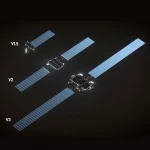

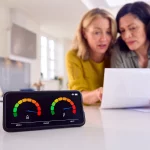
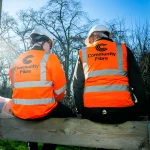
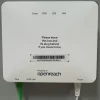



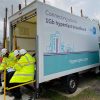







































These alarm companies need to update their base stations to use a sim card which dials via the cell network rather than a landline, and has a fall back for data service.
You could delay it to 3035 and there will still be some not ready for it.
It’s a unfortunate reality that the vast majority of these care alarms/burglar alarms that are not compatible are old non supported legacy units, before my granddad died (2021) he moved into a sheltered accommodation unit that has a care alarm system from the 1990’s, when i googled it the company who owned it had been bought 4 times and the new owners had no information on that unit at all.
It’s also a sad fact most if not all the alarm companies will be thinking “why spend resources to make a adapter when we can just flog them our newest kit which was already made for this for more” leaving the end user (aka our loved ones) to suffer.
Even though she’s not really classed as vulnerable yet and because she lives in the countryside i’ve got my mother-in-law one of those power banks that has a solar cell built in to trickle charge it and left it in a perspex box in the garden, in the case of a power failure lasting more than her mobiles normal battery rate (lasts a day on average, iphone se) she can go get it and charge the phone (she’s had to use it twice in the last year) thankfully the towers that service her area either have a seperate generator or really good batteries because she’s always had a strong enough signal she can call for help or we can call her.
I wish i had a one size fits all answer but whoever can make a apater or can find a way to program something like a pi pico to act as a gsm adapter will make a killing (pun not intended).
Absolutely! BT’s own payphones are still using PSTN lines but the reason for that is simple. The Payphone Access Charge (70p per minute revenue charged to the owner of freephone numbers) is not available on digital voice or mobile. The same applies to New World Payphones, they continue to use BT PSTN lines for the same reason.
There are some New World Payphones which have moved to Vodafone mobile lines. However, when you call Freephone numbers from BT and New World Payphones, they bill 70p per minute to the owner of the freephone number meaning a 20 minute call generates £14 for them.
There is no other reason why they would continue using these lines. The BT Street Hubs all use Voip and the Payphone Access Charge isn’t charged when people use them for calling freephone numbers.
Other than this, there is no real reason why BT should have to provide the PSTN phone service.
Most Kiosks that have a power supply will be easy to migrate to Voip or mobile, kiosks that don’t have a power supply and are located to alternative sites will be removed.
Solar battery in a perspex box is a neat solution.
I have also wondered if a DECT base station for standard cordless phones with a built-in 4G/5G sim and battery backup would be a good option for landline replacement. I am sure this is something BT could manage if they wanted.
I guess It might be possible to pair fall detection devices and alarms with it over DECT as well.
Would also be cool to have an option to trickle charge the base station with a small solar panel stuck in a window for example.
@Nick – suspect it has more to do with BT’s legacy payphones requiring subscriber pulse metering to work correctly (as the exchange needs to tell it when the call has answered & to handle the per minute billing if not a flat rate call).
Though they could do as Australia did and just make all calls to landlines and mobiles free, with chargeable calls requiring a calling card (end result being that the phone doesn’t need to care anymore & they can just wire it into a 4G unit or VoIP ATA)
Ivor, – I think SPM has not been around for years. Payphones have the tariffs in them.
Vanburen :- I wonder if rather than if BT wanted to make a combined DECT / G4/5 base to if they are allowed to.
Don’t forget it was a political or Ofcom order that BT was stopped from rolling out FTTP in the 1990’s. Look at the mess the country is in now.
BT PR releases . . . don’t worry if you missed this one . . . . they’ll be another one along in a minute.
The telcos should partner up with the firms that provide alarms that will work after the changeover to persuade users to ditch the obsolete alarm systems provided by recalcitrant suppliers.
It’s down to the alarm companies who all know about this.
The PSTN has been ‘digital’ since its inception…
ISDN is entirely ‘digital’.
How so?
The core was analogue until digitalisation in 1990. The local network contained analogue exchanges until 1998.
Analogue exchanges connected via analogue multiplexing (FDM) is in no way digital.
How do we actually discover when out switch to digital voice will actually occur?
The problem is being very exaggerated, First it will be very unusual to have a power cut and no mobile signal and at that time need to make an emergency call. People are also assuming copper lines are a 100% reliable they are not. The data available at present tends to suggest you are more likely to get a service loss with a copper line
If you do feel you are vulnerable and want the belt and braces approach get battery back up
Unfortunately you are talking absolute garbage. A friend of mine lives in the south of Sevenoaks and when he has a power cut both cells he can get go down. I live in a rural area and have the same problem, two cell sites go down. Copper lines are very reliable for POTS, mine is 3 miles to the exchange and I’ve only ever had one problem in 40 yrs caused by them being careless at the top of the DP. And my Fibre connection is less reliable, it is frequently interrupted for “maintenance” It’s not ones router and phone that just need back-up, it’s the primary services that need at least 3hrs backup to cope with any mandated cuts when there’s a shortage of electricity (it will happen in the short/medium term).
I hope you don’t have a heart attack when your broadband is down.
Forgive me if I have missed something, being in the fortunate position not to currently need a telecare device.
What is it about the Digital Voice (ATA) socket on the back of the newer routers that is incompatible with these telecare devices? Does it not present the same technical interface as the old copper line does?
I would have thought that as far as a telephone/telecare device knows it is plugged in to the old master socket on the wall.
Is it the lack of line voltage to power the units?
I keep wondering the exact same thing. Not knowing how these “telecare” systems work, I can’t say for certain, but I’m going to guess that there is some sort of modem in them, which sends some digital data over a dialup connection, similar to a fax machine.
The “official” stance always seems to be that faxes etc don’t work over VoIP ATAs, but people who test them seem to find that they do. I suspect that ATA specific issues such as echo (and echo cancellation), and VoIP specific issues, such as packet loss, and choice of codec, may mean there is a degree of pot luck as to whether your fax machine/telecare/burglar alarm/vintage computer modem will work on VoIP.